A Wild Wander around Robberg Nature Reserve, Plettenburg Bay, South Africa
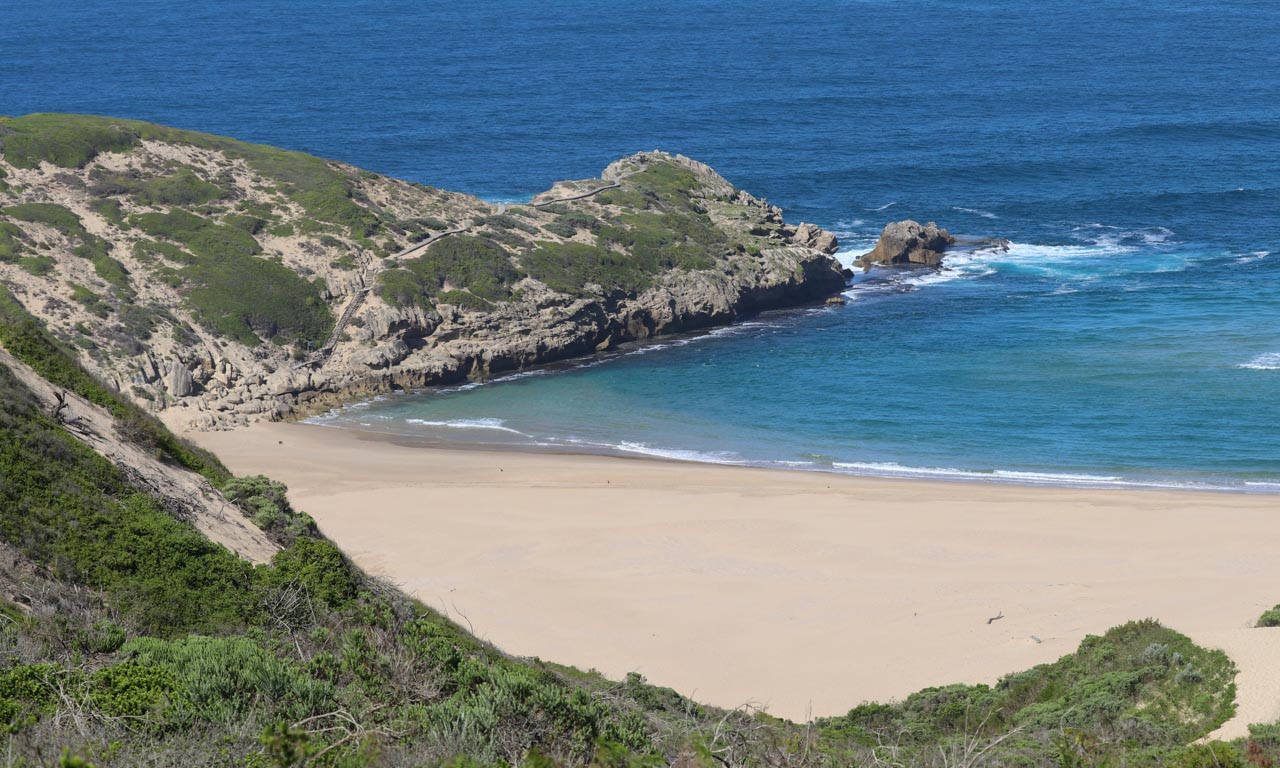
Photo: Robberg Nature reserve and World Heritage Site, South Africa.
This fabulous gem spot, a few kilometres south of the town of Plettenburg Bay on South Africa’s Eastern Cape, is situated on a headland jutting out into the Indian Ocean with the calm, sheltered waters of the bay on one side and a rolling oceanic swell on the other. Most visitors to ‘Plett’, as the town is affectionately referred to by South Africans, are likely to visit the reserve but the main attraction seems to be to stomp one of the three hiking trails and take selfies within its spectacular and unrivalled coastal landscape. I have a feeling that many of the reserve’s natural treasures are sometimes overlooked during the onward march to complete the trails. None of the trails require a mad rush and I would encourage anyone who visits to treat it as a wander through nature rather than a route march. Walk slowly and quietly, stop and observe, sit a while – I guarantee that you will see and experience so much more and wonder at the minutiae of the natural world.
The reserve opens at 7am and if you arrive then you will have the place to yourself and, in summertime, escape the worst of the day’s heat. When I pitched up at 15 minutes past, there were a couple of fishermen on the rocks below the trail but I didn’t see another soul until nearly 8am. Unless you have a SAN Parks Wild Card then entry to the reserve will cost you R50.
There are three circular hiking trails; 2 km, 5km and 11km. The 5km circular route is more than enough to spend a few hours enjoying all that Robberg has to offer. But the 11km route allows you to reach the end of what 15th Century Portuguese navigator Bartholomue Dias dubbed “Cabo Talhado” – “the Sharp Cape” and perhaps more time to sit and search for cetaceans and seabirds. Neither walks are particularly strenuous and an average level of fitness will suffice, although be prepared for a very small amount of scrambling and boulder negotiating at times. As it is a coastal path there are a few ascents and descents to deal with but the rewards really are out of this world. Just make sure that you carry adequate water with you, wear sensible walking shoes, and follow the white seal motif signs that mark the paths.

Photo: Seal motif trail marker, Robberg Nature Reserve.
All walks start from the same car park and are well signposted. The vegetation that you will walk through is called Fynbos. Pay attention to it – it is a fabulously diverse environment that deserves our attention. Fynbos is the belt of coastal scrub and heathland found only in the Cape, wind sculpted by the oceanic climate. It is a botanists dream due to the immense levels of biodiversity and the number of endemic species – only found here. It thrives in nutrient deficient soils and has a fascinating and complex relationship with wildfire which many of the plants require in order to propagate. The evergreen flora of fynbos range from larger rutaceae and protea species to smaller heathers and irises. The variety of species and the climate means that there will be some plants in flower at most times of the year. As you walk amongst the flora keep your eyes peeled for the tiny blue duiker darting between shrubs. It is very timid and the smallest of the antelope in South Africa so regard yourself as blessed if you are lucky enough to get a glimpse of one.
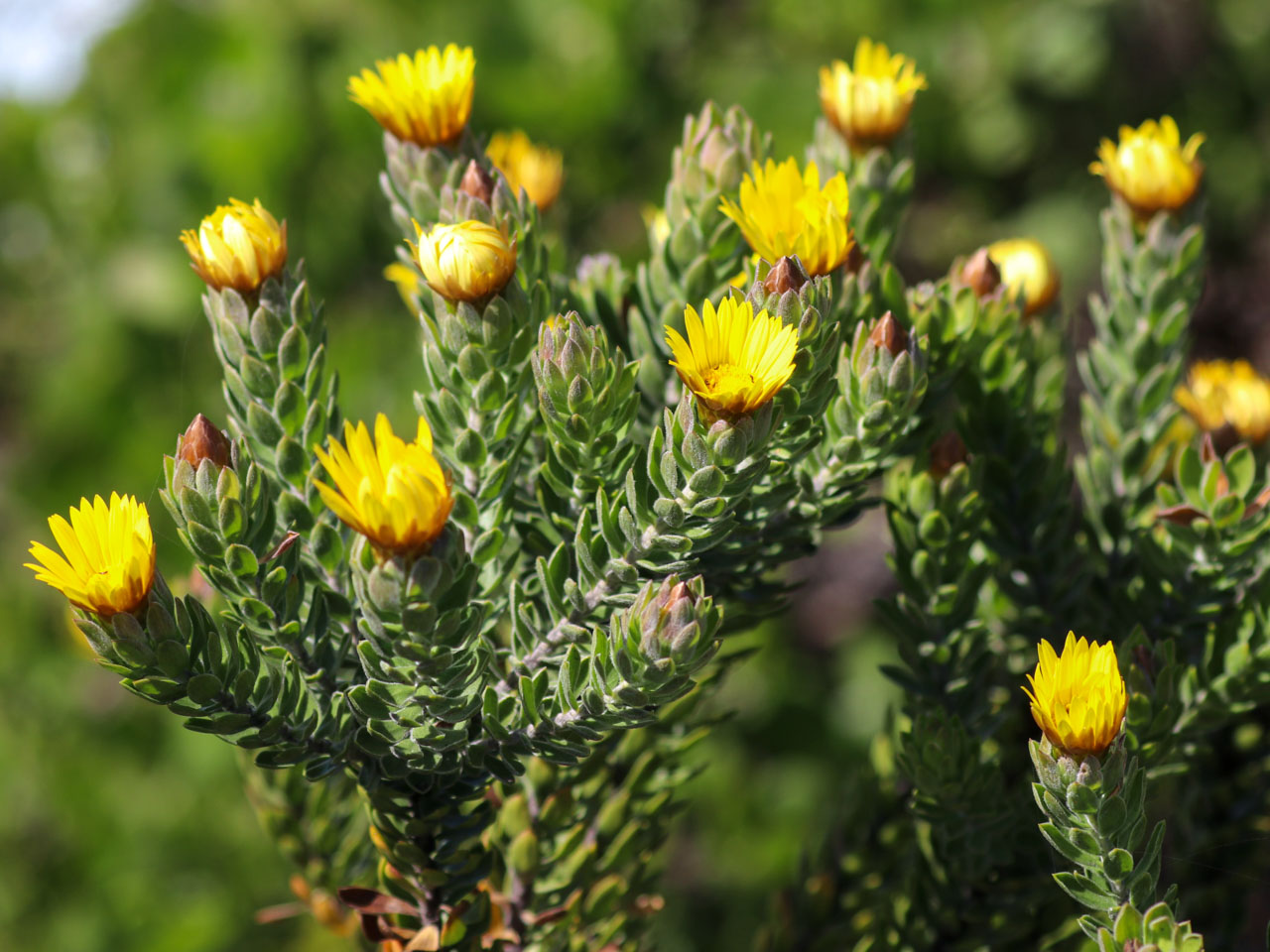
Photo: Fynbos flowering shrub, Robberg Nature Reserve.
The reserve is a World Heritage Site and the landscape that you walk through is an ancient one. The geology dates back to the break up of Gondwanaland 130 million years ago. There is evidence of middle and stone age life in the reserve and there is an important archaeological site complete with interpretative information at Nelson’s Cave. The cave isn’t actually on any of the trails but is situated back between the car park and the reserve entrance necessitating a specific visit. But there are plenty of caves and overhangs as you walk the trail where you can sit, ponder, and imagine stone age people peering out from and sheltering in.
The bird life is certainly worth bringing your binoculars for but even if you don’t own any there is still plenty to see. Sunbirds, fiscals, southern boubous, mousebirds, robin chats and cape white-eyes flit about the foliage. Rock kestrels hunt over the sand dunes and white necked ravens hold the high ground on the rocky crags and in the air. Ravens may seem like everyday birds but do make some time to watch these fascinating corvids and their interactions between themselves and other bird species.
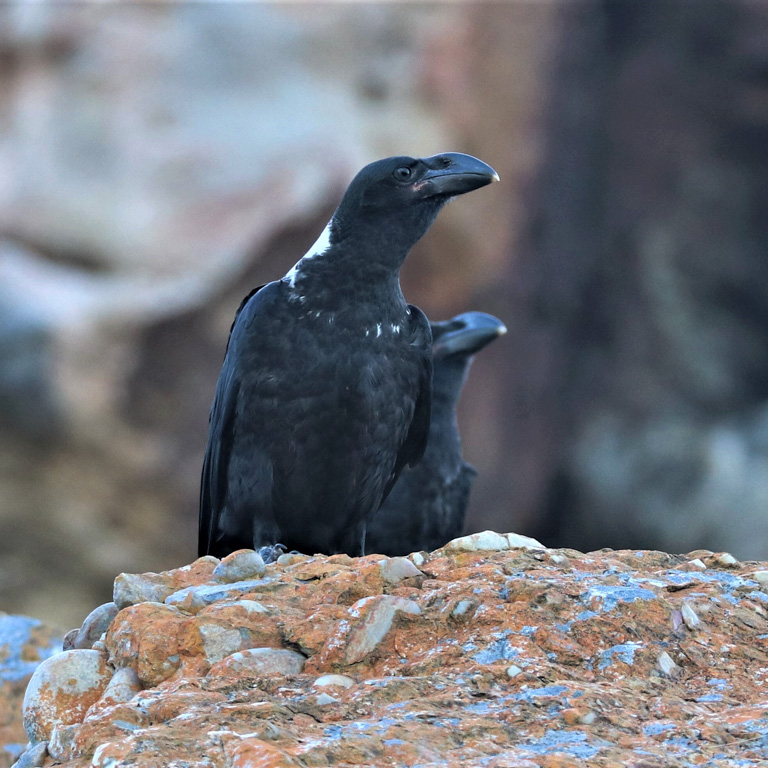
Photo: White necked ravens
Down on the beaches at the shoreline you should find stunning African black oystercatchers and hadeda ibis. There is also a kelp gull nesting colony on the peninsula. In the right conditions, particularly from the more sheltered eastern trail you can look down from your high vantage point into the translucent waters and watch cormorants fishing underwater.
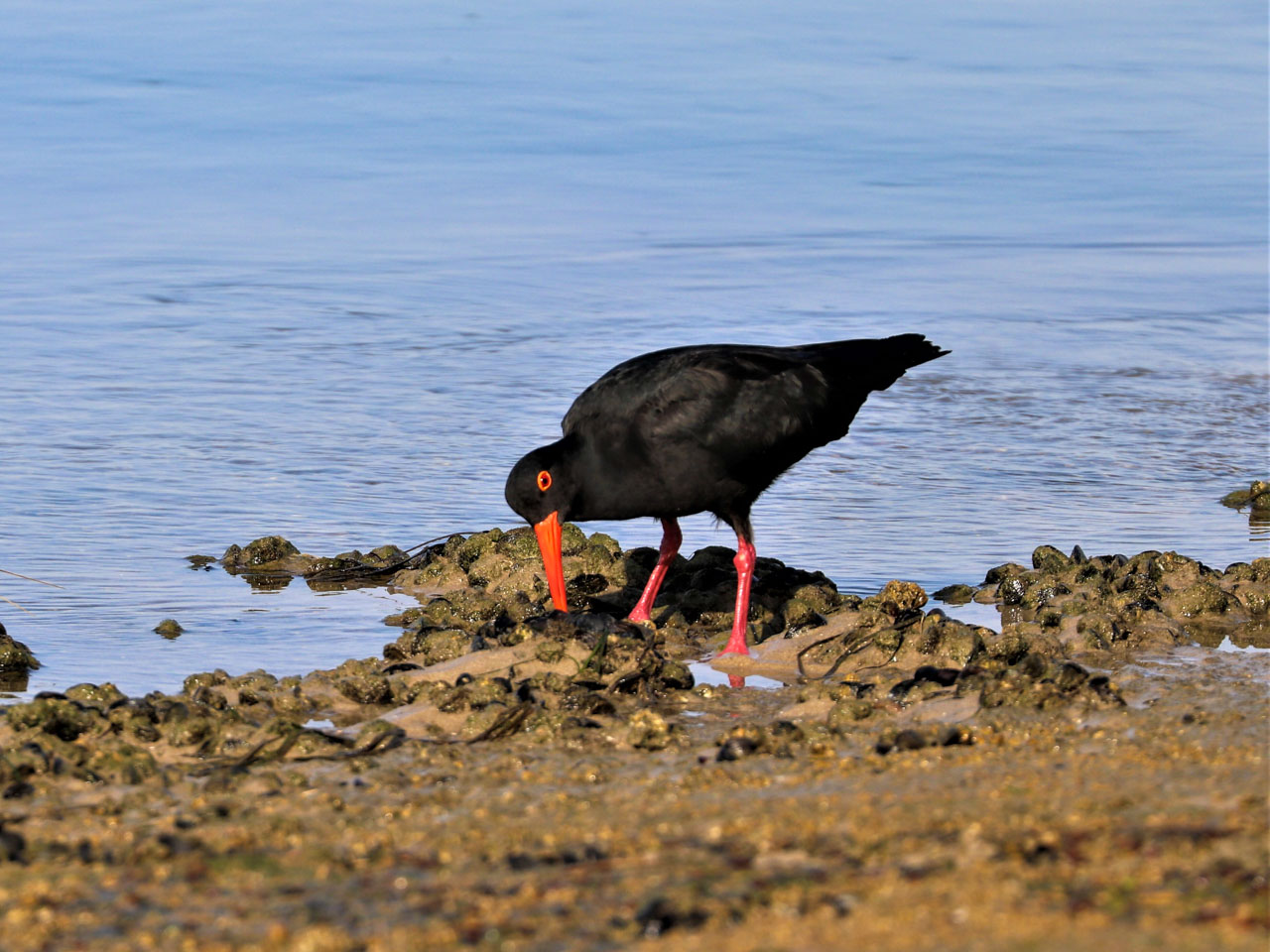
Photo: African black oystercatcher
After at least half an hour walk from the start of the trail, past The Gap, you will come across the Cape Fur Seal haul out where you can sit and watch, sometimes hundreds of seals, on the rocks and in the water below. Just like with the cormorants your height will give you a unique view of the seals’ behaviour under the water. Sharks can also sometimes seen from the reserve.
Cape fur seal photo to be added
From the headland at the tip of the peninsula by the lighthouse you could pick up oceanic birds from the albatross and petrel families during the winter months. Cape gannets can be seen plunge diving into the ocean after bait balls of fish at any time of year. The winter months, between May and September are also the best time to keep an eye out for whale blows when the large humpback and southern right whales frequent the region. Indo-pacific bottlenose dolphins and the rarer Indian Ocean humpback dolphins are also often spotted from Robberg so keep your eyes open for splashes and fins!
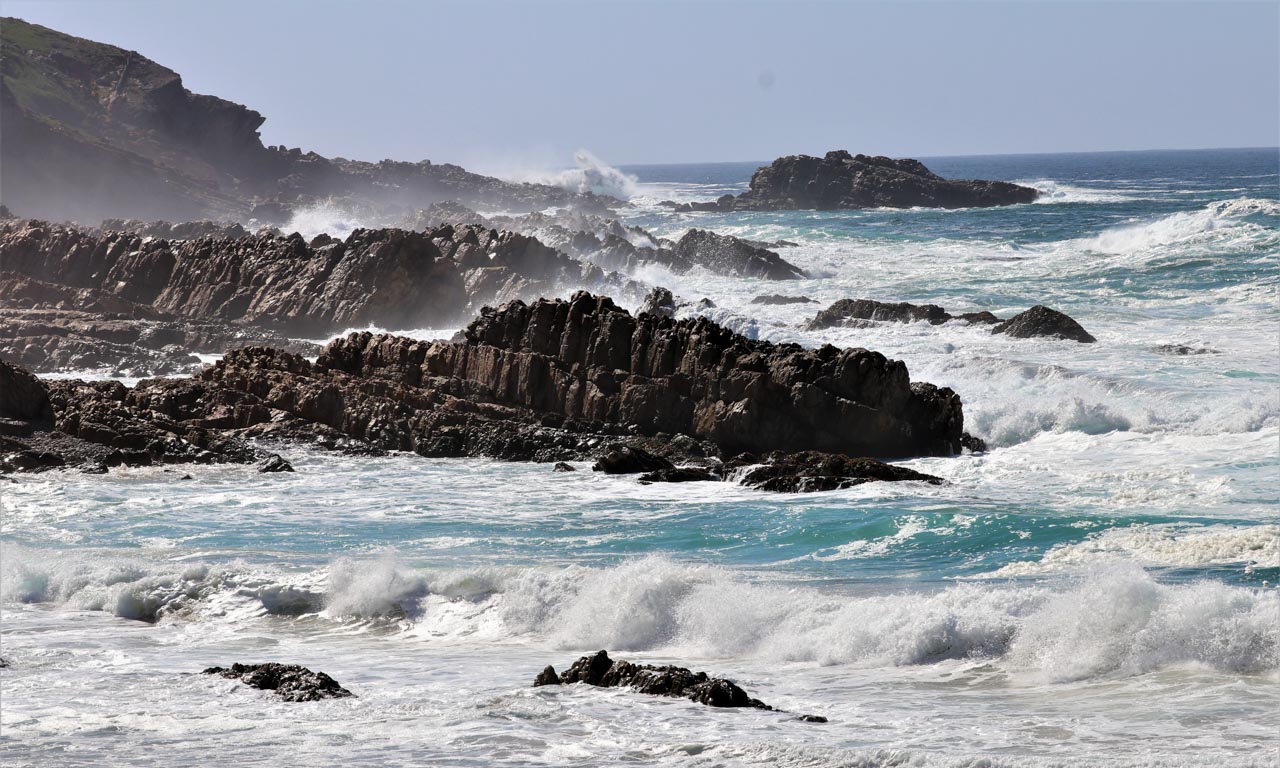
Photo: Wild seas, Robberg Nature Reserve.
The western side of the reserve, which hikers normally experience on their return walk, is open to the power of the ocean with breakers crashing into the cliffs and this is also where the accessible beaches are. This is best accessed by a slide down the sand dunes at Witsand half way along the reserve. But do stick to the trail when on the dunes as they are particularly sensitive ecosystems.
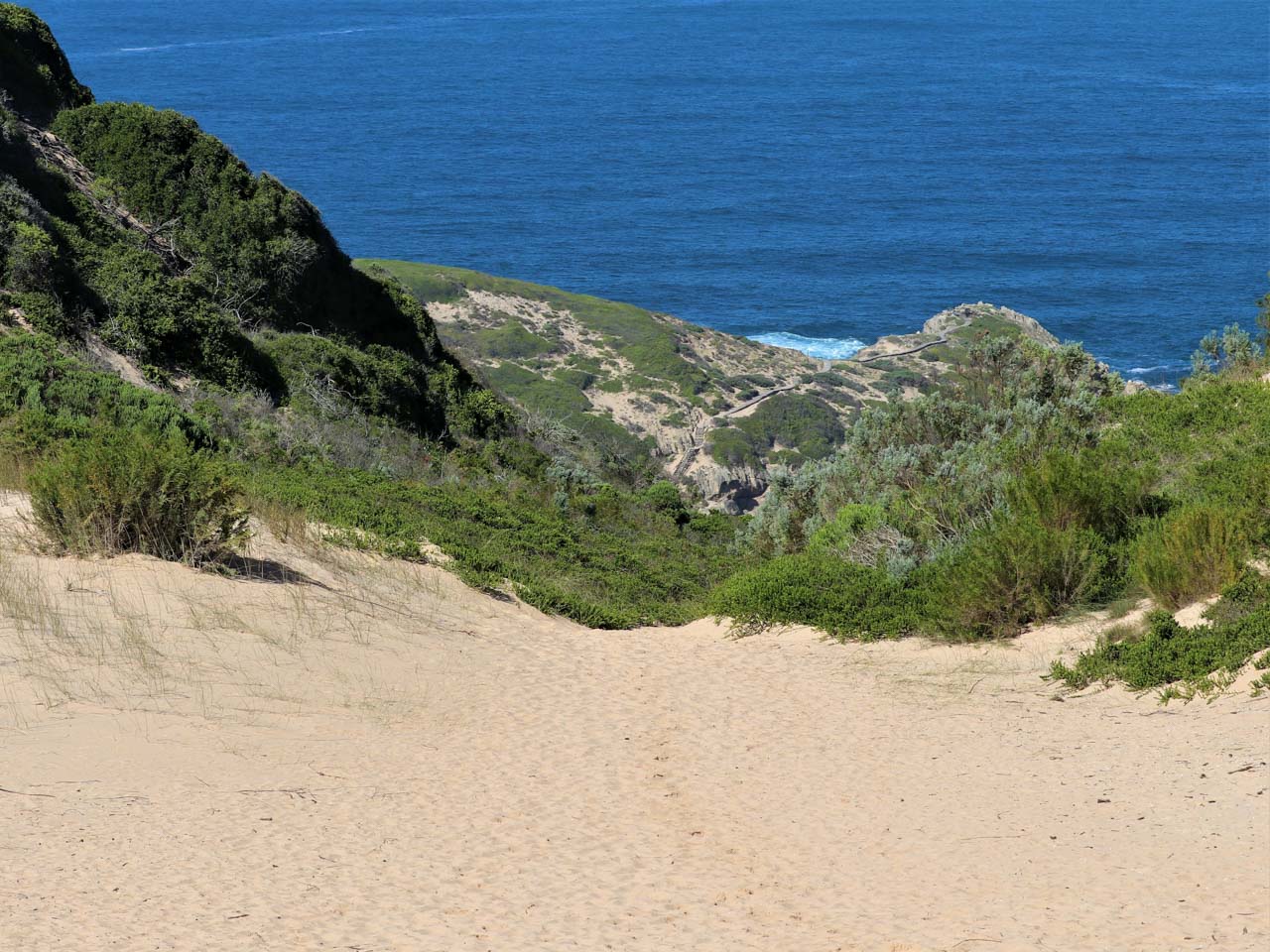
Photo: Witsand dunes, Robberg.
As you come down the dunes you will find Die Elland (The Island) at the end of a sandy spit.
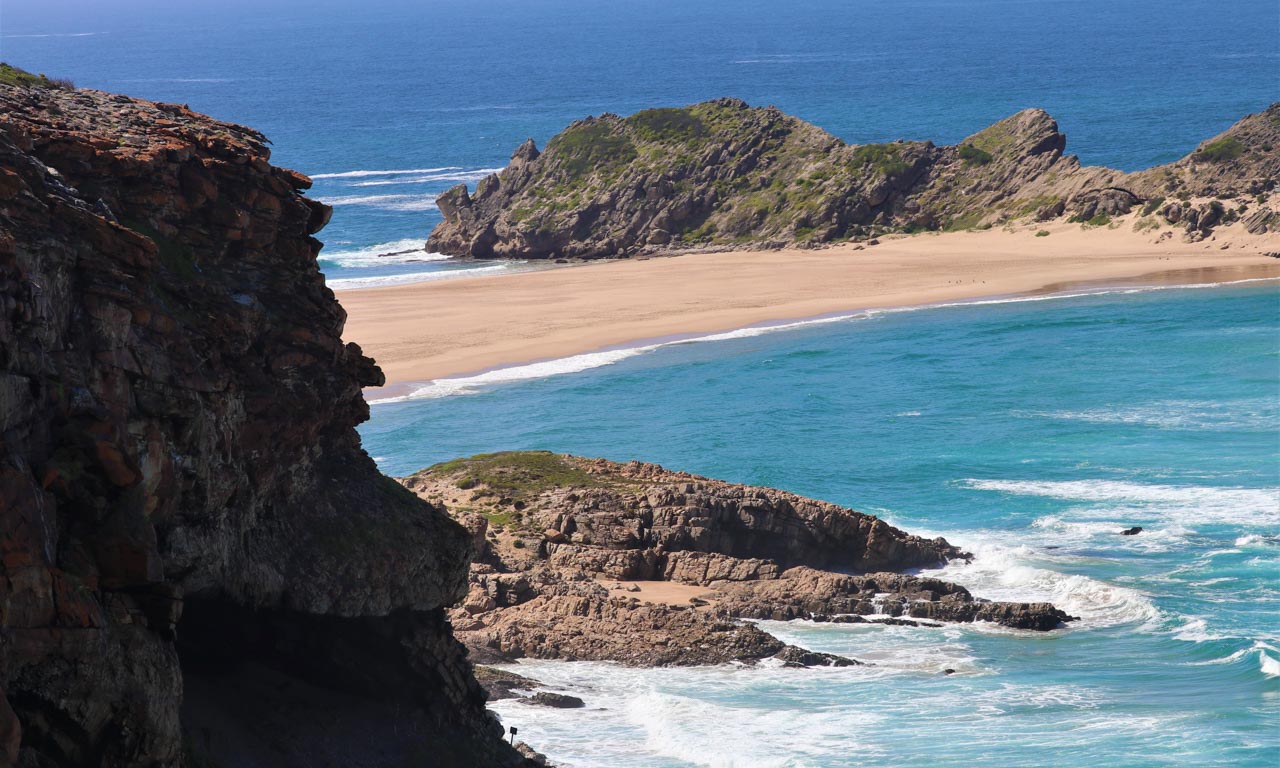
Photo: Die Elland/The Island, Robberg Nature Reserve.
To your left you will see the Fountain Shack: the only accommodation in the reserve which you can rent overnight and have the peninsula truly to yourself. The beaches are out of this world and aesthetically rival any across the globe. There are plenty of rock pools to explore if the tides and your time allow. Slowly meander along the beach watching the shore birds and searching for driftwood. When I was there the sand was peppered with stranded bluebottles, otherwise known as Portuguese or Pacific Men of War. These fascinating creatures are not actually jelly fish but rather siphonophores – a colony of individual organisms each with its own function but dependant upon each other to survive. Don’t handle or step on them as they can produce a painful sting.

Photo: Bluebottle siphonophore on South African beach
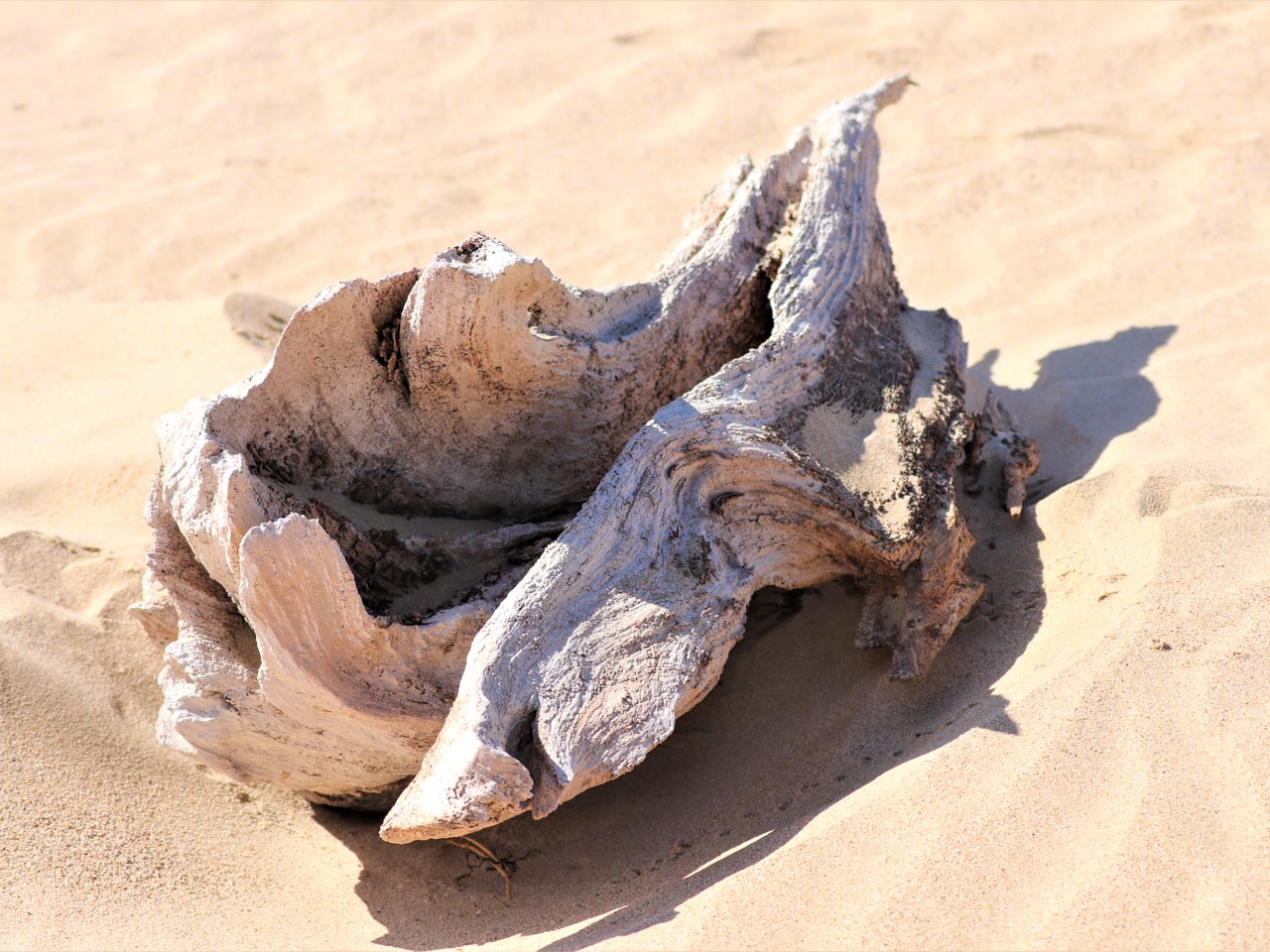
Photo: Bleached driftwood on a South African beach
Back on the trail up amongst the sandstone boulders you could see rock hyraxes, referred to in South Africa as Dassies. These medium size rodents are most active during the early and latter parts of the day. Butterflies will flit across the paths and you might find yourself having to step over green milkweed locusts. Check these extra-terrestrial looking insects out if you come across them, they really are from another world!
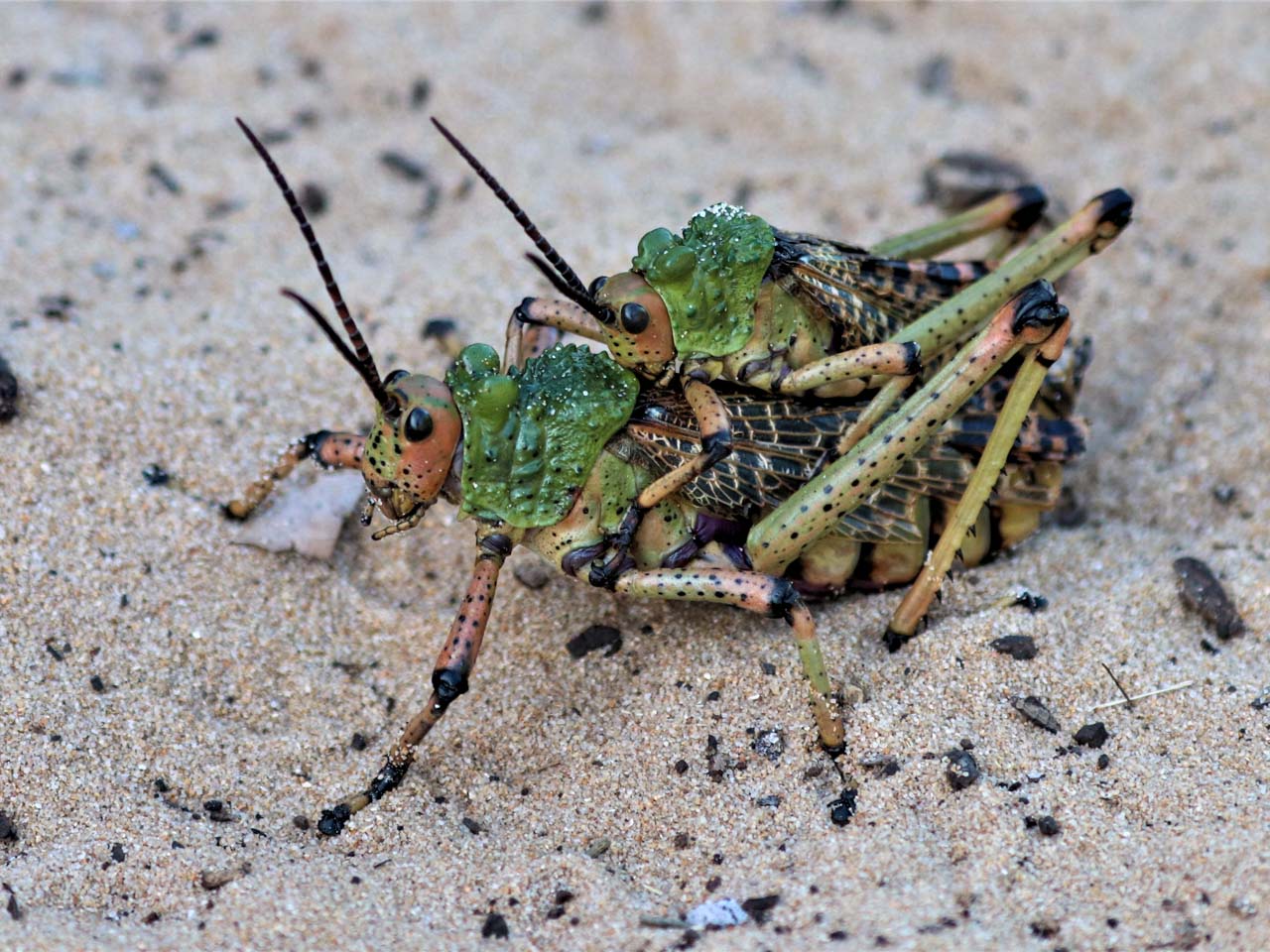
Photo: A pair of milkweed locusts mating
As well as skinks there are also plenty of Southern rock agamas to be spotted on and beside the trails. The male reptile has a colourful blue head. They are relatively easy with human presence and if you are quiet and still you can observe them for some time. Amazingly, when alarmed, the male can reduce the blue breeding colouration on its head to the more natural rock coloured camouflage that it uses to blend into its surroundings

Photo: A male southern rock agama
All of these wonderful creatures and more can be found in this nature reserve. Robberg itself is spectacular in its dramatic landscape but the presence of the so many diverse and smaller organisms that inhabit it really does make it the jewel in the crown of South Africa’s Garden Route. All we have to do to experience them is slow down and look.